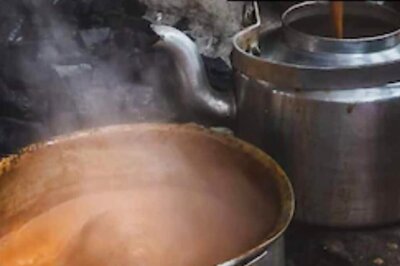
views
Dehradun: The Uttarakhand forest department has developed a forest named “Badri Van” near the famous Himalayan temple of Badrinath by growing plant species endemic to the area. The Badri Van has been developed over a one-acre plot along the highway en route to the famous temple, Chief Conservator of Forest Sanjiv Chaturvedi, who heads the research wing of the state’s forest department, said.
The species grown predominantly on the plot include the Badri tree, Badri Tulsi, Badriphal and Bhojpatra, which abound in the area, he said. All saplings are accompanied by steel signages inscribed with passages in Hindi and English introducing the plants and detailing their various characteristics, Chaturvedi said. “This research demonstration plot has been set up in the form of a small patch of forest with the sole objective to showcase the peculiar ancient flora associated with Badrinath,” he said.
Juniperus Macropoda, commonly known as the Badri tree, belongs to the Cupressaccae family and has a characteristic aroma in its fruits and leaves, from which “dhoop” is made. Considered sacred in Buddhism, it is valued for its medicinal properties and the berries are used in various Ayurvedic formulations. The wood is used for making furniture, fuel, charcoal and pencils, Chaturvedi said.
Its young branches are used in making medicines for kidney problems. Betula Utilis or Bhojpatra is one of the important ethnobotanical and religious species of the Badrinath area. Its bark has been used historically for writing as well as for making medicines and has been in use since time immemorial for writing scriptures and texts, especially in Sanskrit.
“People going to the Badrinath temple in the ancient times used to tie the bark of Bhojpatra under their feet for making their journey comfortable. It was also used in making different yantras,” Chaturvedi said. Hippophae Salicifolia or Badriphal is a small deciduous shrub or small tree that can be found in the Himalayas at an elevation of 2,000 to 3,700 metres.
Lord Vishnu, to whom the Badrinath temple is dedicated, is believed to have survived on Badriphal while doing penance in the valley. It is a rich natural source of multivitamins, including vitamin A, B1, B12, C, E, K and polyphenols, which account for its vast nutraceutical properties, Chaturvedi said. Because of its tremendous health benefits, it is consumed in various forms across the globe. A high-quality medicinal oil is made from its fruit and used in the treatment of cardiac disorders. This plant is a good soil binder and useful in nitrogen fixation, the official said.
Origanum Vulgare or Badri Tulsi, which grows in and around the Badrinath valley, enjoys a special status as it is offered to Lord Badrinath. This plant is considered as a favourite of Lord Badrinath and a garland made of its fresh leaves and twigs is offered at the temple. It is also distributed among the devotees as “prasad”. Badri Tulsi is available on such a large scale only in areas around the Badrinath temple.
Badri Tulsi is characterised by its typical aroma which lasts for a very long time. This species has various medicinal properties and is used in the treatment of a number of diseases.
Disclaimer: This post has been auto-published from an agency feed without any modifications to the text and has not been reviewed by an editor
Read all the Latest News and Breaking News here




















Comments
0 comment